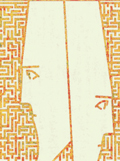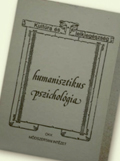The eLitMed.hu medical portal uses computer cookies for convenient operation. Detailed information can be found in the Cookie-policy.
Lege Artis Medicinae - 2020;30(01-02)
Content
[Personality development in East and West, and some clinical implications ]
[Exploring human personality focused mainly on trait and state markers of behaviour so far. Nevertheless, the concept of the universal, culture-independent model of personality carries more disturbing difficulties: hardly understandable inter-cultural conflicts, culture-related mental disorders and scientific experiences with unexpected outcomes. It can be hypothesized, that beside personality concept represented by the Euro-Atlantic civilisation and mainstream psychology there is an alternative concept of personality. Opposed to the independent, autonomous ego concept of individualistic cultures, collectivistic (primarily far-eastern) cultures are providing an interdependent model. According to this model, the core element of personality are determined rather by social embedding instead of the person’s own characteristics, which are secondary to the personal traits and characteristics. This study attempts to briefly outline the concept of interdependent personality, with some illustrative clinical examples. ]
[American-Hungarian forerunners of humanistic psychology and medicine: Andras Angyal and Bela Mittelmann ]
[The fact that there are two significant Hungarian pioneers in humanistic psychotherapy is still not recognised in the Hungarian academic community. In order to redress this omission the author compares and considers the careers of András Angyal and Béla Mittelmann. Both individuals left Hungary in 1920, settling first in Europe and subsequently in America, where they separately enjoyed successful careers. According to the author the trajectory of their lives is quite representative of many Hungarian emigrants during this period in history. This study examines the course of their life and explores their main achievements in the context of their contemporary relevance and enduring legacies. In the case of Angyal, it is the holistic-organismic theory of personality and influence on Maslow, which are his paramount achievements. As regards Mittelmann his topical contribution has been to the practice of “coaching” on the one hand and the application of dance and body therapy to recovery on the other. ]
[History of Daytime Hospital of the Department of Psychiatry in the University of Debrecen ]
[In Hungary, there was a ward related psychotherapy already since the 1960s, yet without any national network to the 1980s. In Debrecen the spreading of the psychotherapeutic approach started in the psychiatric facilities since the 1990s. Daytime Hospital was founded first in the County Hospital and later on in the Department of Psychiatry of the University. The latter option was provided by separating the psychiatry from neurology. This study presents the development of the day care at the Psychiatric Department along the opportunities and shows the structure of the actually functioning system finally reports on our future plans respectively. Initially started the occupational therapy, gymnastics, community cooking and walking, which did not require any separate rooms. The 22-bed psychotherapeutic unit was established 2014 with its joined capacity for 11 persons in the Daytime Hospital. The County Hospital is engaged primarily in socio-therapy of psychotic psychiatry patients, however the Psychiatric Department is rehabilitating mainly patients with affective spectrum disorders. Patients are treated in socio-therapy and psychotherapy small groups for a half or one year. Afterward they enter the outpatient program, may join the Patient Club or decide for therapeutic occupation aiming the best way of recovery. According to the feedback, there is a long-term change in the mental state of the patients leading to improvement in their quality of life, which we plan to prove by an efficacy research program. ]
[The Veszprém model, alias a different approach of psychiatric care]
[This study describes an integration of a county-level psychiatric care unit with two elements of primary social care, namely the community psychiatric care and the daycare for psychiatric patients via mediation of a specific foundation. Adequate trainings make the connection and dual employment possible in the presented system. On the health care side development is characterized by extended psychiatric care with effective psychosocial interventions. Adding specialized group psychotherapies and sociotherapies to the activity of the social care also brought a quality change, extension of which provided self-help and the consumers' applicability as therapy leaders in sociotherapy group. Based on our ten years of practice we may declare that recovery-based psychiatric rehabilitation can be realized more effectively in this community-based biopsychosocial model of care. ]
[End of the line? Addenda to the health and social care career of psychiatric patients living in Hungary’s asylums]
[The authors are focusing on a special type of long term psychiatric care taking place in Hungary outside of the conventional mental health care system, by introducing some institutional aspects of the not well known world of so called social homes for psychiatric patients (asylums). After reviewing several caracteristics of institutional development of psychiatric care in Hungary based on selected Hungarian and international historical sources, the main structural data of present Hungarian institutional capacities of psychiatric health and social care services are shown. Finally, the authors based on own personal experiences describe several functional ascpects of the largest existing asylum in EU, a social home for long term care of psychiatric patients. By the beginning of the 20th century, Hungarian psychiatric institutions were operating on an infrastructure of three large mental hospitals standing alone and several psychiatric wards incorporated into hospitals. Nevertheless, at the very first session of the Psychiatrists’ Conference held in 1900 many professionals gave warning: mental institutions were overcrowded and the quality of care provided in psychiatric hospital wards, many of which located in the countryside of Hungary, in most cases was far from what would have been professionally acceptable. The solution was seen in the building of new independent mental hospitals and the introduction of a family nursing institution already established in Western Europe; only the latter measure was implemented in the first half of the 20th century but with great success. However, as a result of the socio-political-economic-ideological turn following the Second World War, the institution of family nursing was dismantled while different types of psychiatric care facilities were developed, such as institutionalised hospital and outpatient care. In the meantime, a new type of institution emerged in the 1950s: the social home for psychiatric patients, which provided care for approximately the same number of chronic psychiatric patients nationwide as the number of functioning hospital beds for acute psychiatric patients. This have not changed significantly since, while social homes for psychiatric patients are perhaps less visible to the professional and lay public nowadays, altough their operational conditions are deteriorating of late years. Data show, that for historical reasons the current system of inpatient psychiatric care is proportionately arranged between health care and social care institutions; each covering one third. Further research is needed to fully explore and understand the current challenges that the system of psychiatric care social- and health care institutions are facing. An in-depth analysis would significantly contribute to the comprehensive improvement of the quality of services and the quality of lives of patients, their relatives and the health- and social care professionals who support them. ]
[Dual diagnosis of addiction ]
[Psychopathology is significantly high among individuals with addiction problems compared to other populations. We look at the dynamic and nature of these correlations, and address the specific treatments of such comorbidities, as well as the vulnerabilities of professionals working in the field. Few typical cases of interactions between drug use and mental disorders will be presented to provide example of the complexity and importance of dual-diagnosis. ]
[Clozapine - the last resort antipsychotic for treatment resistant schizophrenia ]
[More than 60 years old is the first antipschychotic drug that is operating atypically as well. With its multifarious history it gained the golden standard title of all therapy resistent schisophrenic cases for the last three decades. In this article we place clozapine on the map of psychopharmacology and review its history’s most important chapters. In the third part we discuss some of the most relevant effects and side effects of clozapine in the light of latest research and practical considerations touching the problem of the optimal start timing. ]
["Punishment-therapy” - chances of psycho-rehabilitation for mentally ill offenders under forced medical treatment]
[When examining the life course of mentally disordered offenders it is unavoidable to take into consideration the legal definition of insanity that exempts an individual from ordinary punishment in the given context of criminal law. As technical as it is, legal language describes and prescribes institutional responses on how to deal with mentally disordered offenders - not being independent from the everyday societal stereotypes on mental illness. In Hungary, the definition of criminal liability consists of medical and legal elements. Thus, in practice court appointed psychiatric experts are solely relied upon in determining whether or not the accused are criminally liable - the formal decision is in the hands of the court. If no criminal liability is determined by the experts, the court has to acquit the accused. In some special cases this acquittal opens the way to criminal psychiatric detention that is maintained by the Hungarian Prison Service. The aims of criminal psychiatric detention are twofold: rehabilitation and punishment. We suggest that it is nearly impossible to serve both of the aforementioned aims simultaneously. Furthermore, our article argues that the philosophy of care is focused on punishment and biomedical treatment nowadays, rather than rehabilitation and holistic bio-psycho-social treatment. The approach of treatment in operation makes successful recovery of patient-detainees difficult. Moreover, there are systemic issues as well: limited effects of review proceedings, holes in the psychiatric-social institutional care system and the general societal stigmatisation of people with mental illnesses can unreasonably prolong discharging “guilty patients”, thus, they stay detained 4-5 years longer. ]
1.
Clinical Neuroscience
[Headache registry in Szeged: Experiences regarding to migraine patients]2.
Clinical Neuroscience
[The new target population of stroke awareness campaign: Kindergarten students ]3.
Clinical Neuroscience
Is there any difference in mortality rates of atrial fibrillation detected before or after ischemic stroke?4.
Clinical Neuroscience
Factors influencing the level of stigma in Parkinson’s disease in western Turkey5.
Clinical Neuroscience
[The effects of demographic and clinical factors on the severity of poststroke aphasia]1.
2.
Clinical Oncology
[Pancreatic cancer: ESMO Clinical Practice Guideline for diagnosis, treatment and follow-up]3.
Clinical Oncology
[Pharmacovigilance landscape – Lessons from the past and opportunities for future]4.
5.











